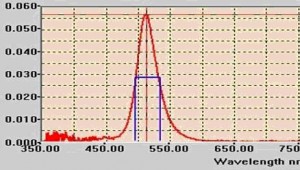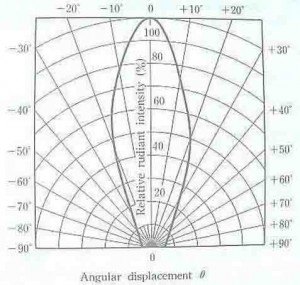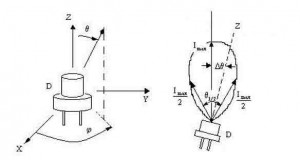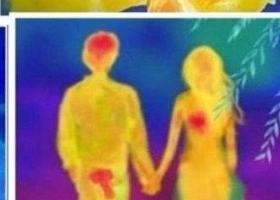Each uv module(or uv led strip) function
Ultraviolet spectrum contains all Wavelength of 100 nm to 400 nm, generally divided into three categories:UV-A (315-400 nm, also known as UVA), UV-B (280 315 nm, also known as UVB), UV-C (100-280 nm, also known as for short wave ultraviolet , also called UVC). UV LED technology saw first application to Dental treatment instrument and detection of forgeries in early, However, with new uv technologies that but performance, cost and benefit of durability and the life of the product is an ongoing process. in which the value of the product or service increases with the number of users;
UV LED current uses include: optical sensors and instruments (230-400nm), UV authentication, barcode (230-280nm), surface water sterilization (240-280nm),Detection and analysis of body fluid(250-405nm), protein analysis and drug discovery (270-300nm), medical light therapy (300-320nm), ink printing (300-365nm) ,detection of forgeries (375-395nm) , Beauty sterilization( 390-410nm).
Monthly Archives: November 2015
The principle of infrared bar code
The principle of infrared bar code
Infrared identification of bar code should be simple. is the physical knowledge, the lens of candle imaging technique, Add to this a light spot sensor conversion. It is for this reason that position of the lens, and the size of the sensor, the density of the relationship, So here used a scanning distance and density parameters to distinguish the performance of the machine. After the bar code imaging, the sensor to give bar code some translation work. and return to the translation code(converted into digital code 0 or 1) from the QR codes in their black and white form,
Application of LED IR in camera
Application of LED IR in camera
With infrared led’ camera, the camera is mainly used for shooting area of without light, through infrared led light (or individually installed infrared light) created by infrared rays. the invisible infrared light for the human eye not to see, when infrared lights reaches the end of the range. infrared camera can intake scene black-and-white images in the area. Now most of the monitoring system using an infrared camera,The goal is the day and night automatic conversion,

more convenient to use. infrared camera can take the black and white picture in the infrared Light area. Now most of the monitoring system using infrared cameras , because the current infrared camera can only accomplish transformation work that is the day and night automatic conversion, the infrared led are heavily used by developers and support open standard technologies in Security System Integration.
Difference betweenλd (main wavelength) and λp (peak wavelength)
Difference betweenλd (main wavelength) and λp (peak wavelength)
1, WLP (peak wavelength): spectral emission intensity or radiation power of the highest frequency corresponding to its part is λp.It is a kind of physical quantity,
2, WLD (main wavelength): the eye can see the main color of the light source that this main wavelength corresponds to.in the CIE1931 horseshoe coordinates, from the E point (0.33, 0.33) as the object to do an extension cord with a horseshoe shaped curve in the formed picture.

In usually you see a beam of light, it is not a single wavelength of light, it is composed of many wavelengths of light. Among them,Some of the energy of light wavelength is greater that others.the wavelength is the peak wavelength of the beam(λp).
But the light wavelength distribution of the beam is not necessarily as λpunits to Symmetric distribution. The human sense wavelength is a result of comprehensive effect of each wavelength. corresponds to a single wavelength of light . the wavelength value is λd . dividing an curve area into right and left halves. The Vertical line would be correlated toλd .You want to know light color ofuv led strip,you’ll have to see the lambda D value(λd), because the λd would more accurately reflects the true colours ofuv led strip.
Algorithm of UV LED STRIP
Algorithm of UV LED STRIP
How do we get that energy value of UV, a lot of people are not fully understand. We all know that energy is equal to the intensity multiplied by time, but someone asked: “each time point would look different. The result of this method is accurate and reliable and is accord with the practical effects isn’t?”
UV Energy = power × time, if the power value is changed during the course of measurement, the calculation of the energy value will need to use the Cumulative algorithm, with each of the energy accumulated in a short period of time to get the final energy value. The shorter the accumulation time, the more accurate the final energy accumulation value of uv led.
R&D new hot point of Medical care— UVB
UVB — ultraviolet uv LED strip is the wavelength of 100 nm to 280 nm, which is of great value in the field of sterilization, medical, biochemical detection, high density information storage and secure communication. Compared with the mercury lamp UV light source, based on aluminum gallium nitride (AlGaN) materials ultraviolet light-emitting diode (LED) has the following advantages:Strong, energy saving, long service life, no mercury and environmental protection etc. UVB LED is gradually infiltrated into the traditional application fields of mercury lamp.At the same time, many other applications can now benefit from UVB LED.such as the white home appliances disinfection module, portable water purification system, mobile phone disinfection, etc., thus showing a broad market prospects, becoming the semiconductor lighting LED, the new hot spot of global LED research and investment.it’s became global LED research and investment new hotspot in subsequent semiconductor lighting Research Report shows that the future of the LED market may be divided into two parts, one for general lighting visible LED; other is a high-tech innovation as the characteristics of UVB ultraviolet LED.Compared with visible LED, the luminous efficiency and the optical output power of UVB ultraviolet LED are lower than visible LED at present. But now we use the nano scale technology to produce nano pattern substrate,not only improved the quality of materials, but also improve the light extraction efficiency.
280 nm ultraviolet LED @ 20 mA current, the output power of the optical output reached more than 3 MW,can also optimize the packaging process, making deep UV LED light beads encapsulated can be achieved morethan 4 mW optical output power.
What about the lot Electric current can be built using infrared LED?
What about the lot Electric current can be built using infrared LED?
General IR chip processing of the infrared LED can withstand only 4~500mA,preferably at added up to current-limiting resistance.the ir led be electric current under 300 mA in General. VF about in 1.7V the infrared emission tube almost reached the power of peak transmit.under the condition of ir chip with 300mA. All of ir led are subject to the most stringent testing and checking procedures with DC current 50mA.
In instantaneous the current of infrared led can reach the 800mA,then if you use poor infrared led can cause burning or transmit power attenuation fast, the infrared emission tube can withstand the instantaneous current of 1000mA,
but in the current led market, some ir led can withstand the instantaneous current of 1000mA,The solution can solve that problem. of course, the shortcomings of design is battery consumption faster.
Some key features of UV LED strip
Some key features of UV LED strip
UV spectral distribution, radiant intensity, radiant quantity and radiation density.
A: Spectral distribution
Spectral distribution is described that reach up to the wavelength distribution surface of the radiation energy. It is often used “nm” to express a relevant standard.
B:UV radiation intensity
Radiant intensity is the radiation power reach up to the surface area of the surface. Radiation intensity as per square centimeter of “watt” or “mwatt” units to expressed. It varies with the output power, efficiency of the led strip, Radiation intensity includes — all the factors related to power, efficiency, radiation output, reflectivity, the size and geometry of the led strip. Due to the absorption characteristics of the UV curable material, the light energy reach up to the surface above (below) is less than that of reach up to the surface. The curing conditions may be different in these regions. If the optical is too thick, it may reduce the light efficiency, it can cause the material of curing is not sufficient.
Three: UV LED strip’s radiant energy
The UV LED strip’s radiant energy Represents that the total amount of radiation energy photons reach the surface of the printing products unit area (while the radiation intensity say the arrival rate). In any given light source, the radiation energy and inversely proportional to the speed of curing . the radiation energy andtime of curing are inverse ratio.the radiation energy with an accumulation of Radiation intensity time.
With per square centimeter Joule or mJoule can represent the unit of radiation energy. (unfortunately, there is no An Conversion Information between the spectral content and the radiation intensity.) .In ink or coating, the higher the surface of the radiation intensity will provide a high light energy.The Radiation intensity Was Influence depth of cure rather than longer curing time. High degree of radiation allows the use of less light initiator. The photon density increases of the photon – Collision photo initiator, thereby compensating for the lower light initiator concentration. This thicker coating will be effective, because the surface of the photo-initiator absorbs and hinders the same wavelength light to reach deep initiator molecules.
Four: radiation density
Infrared radiation is mainly emitted the infrared energy by the UV light source out. Infrared energy and UV energy is collected and focused on the work surface together Layer.It decision to efficiency of the IR reflectivity and reflector. IR energy can be converted to a single bit of radiation energy or radiation intensity. But in usually, it is the surface temperature is the important part needs to pay attention. There are many techniques to solve the between IR and UV relationship. It can be reduction of the transmission andControl heat transfer. Emission reduction is achieved by reducing the flow of the current.
Graphical interpretation of IR led strip emission angle and intensity
IR led strip Is the electrical energy, it Can be converted into electrical energy to near-infrared light directly (not visible),is directly converted into near infrared (not visible), it is emitting device that can radiate the infrared light, infrared led strip in the working process of the parameters are not allowed to exceed the limit value, so when using ir led strip should pay attention to the parameters , not free to replace. In addition, it can not arbitrarily change the limiting current resistor of infrared led strip.
The following is used to explain about problems of the emission intensity and emission angle:


1. Launch angle θ1/2: in the luminous (or radiant) intensity distribution graph(angular displacement), luminous (or radiant)is greater than half the maximum intensity,and form a angle. in here we need to know the following points: the same two wafers launch tube, 2θ1 / 2 more bigger, then Iv smaller.holder into colloidal deeper ,angle is larger.; There are many effects of emission angle factors that the support pipe bowl size and depth, the mould R angle size and the wafer size height etc..
Led terms
Led terms
Destination and divided are conveniently studied and scientists of application. The UV radiation is put the UV radiation is divided into A-band (400 to 315 nanometer), B-band (315 to 280 nm) and C band (280-200 nm), and were known as UVA, UVB and UVC.Like other things, ultraviolet radiation can cause human advantageous aspects and negative aspects.
Through the research of the Science,ultraviolet radiation under matter effect can create a variety of matter effects. and be used for people. Radiometric measurement unit of physical isradiation energy, the radiation term can be applied to the entire electromagnetic spectrum, including microwave, infrared, ultraviolet and X-rays spectrum.
